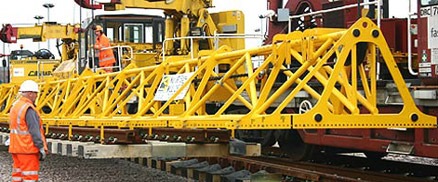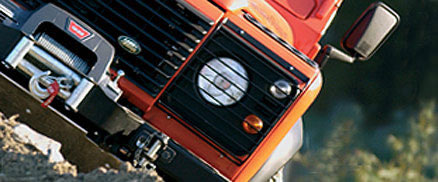November 28th, 2010
Personal fall protection systems are required when an operative is working at an elevated level with an unprotected side or edge, which can be at any height. The system must be designed in such a way to prevent the operative from free falling more than 2 metres or striking a lower level. One of the ways that a company can accomplish this task is by using a Fall Arrest system
Key Components of a Fall Arrest System
There are a number of issues that need to be addressed when considering using a fall arrest system:
The maximum impact force for a full body harness is 6kN and 10kN for the anchorage point. Calculating the impact force is difficult because there are so many variables. These variables include fall distance, person’s weight, and attachment method (self-retracting lifeline, shock-absorbing lanyards, etc.)
It is important that the equipment being used is compatible with one another. The entire system needs to be measured by its weakest link. Conventional locking snap hooks need to be used with compatible D-ring connectors. It is a general recommendation that a user does not mix fall protection equipment from various manufacturers in order to avoid a compatibility issues and to ensure maximum manufacturer guarantee of quality and use.
In layman’s terms, it is the distance that a person falls before any part of the system starts to arrest the fall. Free fall is measured from the anchorage point to the point in which the system started to arrest the fall. This distance excludes deceleration distance and lanyard/harness elongation. Maximum free fall distance is 2 metres or striking a lower level.
Is measured as the distance the operative fell from the point at which they were standing to the position of their feet after the fall. Free fall and deceleration distances are included in the measure.
Anchorage points for the fall arrest protection system need to be rated at a minimum of 10kN per person. If engineered, they need to have a 2:1 safety factor.
Posted in Arbil Lifting Gear |
November 27th, 2010
Safe Use of Blocks
The basic objectives of any lifting operation are to move the load to the desired location and land it safely, efficiently and without damage to the load, the equipment used or the surrounding buildings, plant etc. In addition to any specific instructions relating to the block the following general points must be observed:
- Never attempt lifting operations unless you have been trained
- in the use of the equipment and slinging procedures.
- Position the hook directly over the centre of gravity so that the line of pull is vertical.
- Do not use the chain/wire rope to sling the load, ie do not wrap it round the load, back hook or choke hitch.
- Do not lift on the point of the hook or overcrowd the hook with fittings.
- Never lift/lower more than the marked SWL. In the case of manual equipment if abnormally high effort is required, and with power operated appliances they fail to lift the load, or if the load slips this is an indication of too high a load or a fault – check the load and the appliance.
- Avoid unnecessary inching of power operated appliances and do not impose sudden or shock loads.
- Push rather than pull loads suspended from appliances with push/pull trolleys and if un-laden pull on the bottom hook.
- Never pull an appliance by the pendant control, supply cable or hose.
- Avoid sudden movement of travel motion or undue effort in pushing the load which can cause the load to swing.
- Avoid excessive or intentional use of motion limits unless they are additional limits intended for that purpose. Avoid running appliances against end stops.
- Do not allow anyone to pass under or ride upon the load. Never leave suspended loads unattended unless in an emergency then ensure the area is cordoned off and kept clear.
- Do not remove guards, protective covers, weather proof overs, heat shields etc without the authority of a Competent Person
Following the points above will enable the safe transportation of heavy loads including beams.
Posted in Arbil Rail |
November 27th, 2010
When it comes to off road driving it is a very different driving skill than normal road driving. You only appreciate how different once you have had a go driving on a road and then an unmade track and perhaps got it wrong. Driving off road requires an entirely different thought process to how you would drive on the road.
You build up instincts and reactions as a driver, whether you have been driving for 5yrs or 25 years these reactions usually surface when something starts to go wrong – for example going round a sharp bend in wet conditions – you are cornering slightly too fast and the back of the vehicle starts to slide out! To try and prevent losing control you would steer into the slide. Unfortunately if you rely on these same instincts when driving off road is not so good. There is a good chance that you may do entirely the wrong thing and the result could be quite serious.
Firstly never under estimate the capability of your 4×4. Fully understand the vehicle and make sure you have read and are familiar with all aspects of the driver’s handbook. Make sure you understand the technical information of the car, weight limits, features and limitations as well as all safety considerations. 4×4 vehicles are all terrain capable but you still have to drive safely as poor judgement can result in personal injury and loss of vehicle use. Take the time to fully get to know your 4×4 is it petrol or diesel, manual or automatic. What type of suspension is fitted and what are the limitations.
Pre driving checks are necessary before you take your 4×4 on your off road adventure. These checks are necessary to prevent any unwanted breakdowns. Ensure your tyres have good grip for the surface you are driving on. Check your lights are fully functional as these are your eyed when it is dark or conditions are rough
Always plan your journey and the things that could go wrong and prepare your vehicle accordingly. Consider what you may need to take with you for example first aid kits, fire extinguishers and methods of communication may be essential if you are miles from the nearest village.
Posted in Arbil 4x4 |


